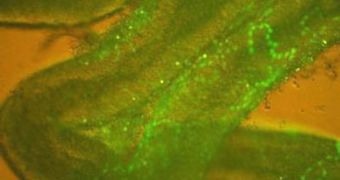Stem cell research is difficult from many perspectives, but one of the things that until now seemed indispensable for it were viruses, without which scientists believed that stem cells could not be converted into the required type of mature cells, and vice versa. But now, a team of experts at the Max Planck Institute for Molecular Biomedicine, in Munster, Germany, have devised a way of turning already differentiated adult cells into pluripotent stem cells, without making use of any kind of viral agent. In their mouse experiments, the experts did not use any protein reprogramming, foreign genes or viruses for the transformation, but devised a method of performing it directly.
According to the team, the key to their success lies completely within culture conditions, as they say carefully maneuvering these factors offers the desired result. Pluripotent stem cells are paramount for the future of medicine, as they can differentiate into any type of cell inside the human body, and could essentially offer the basis for the construction of custom organs, such as hearts and lungs, inside bioreactors. When it will be time to place them inside patients, there will be no compatibility issue, and no need for immunosuppressive drugs, as the organism will recognize the organs as a part of it.
“At first glance, it would appear that it has long been established that pluripotent cells exist in the testis of adult humans and mice. However, it is often unclear as to exactly which cells are being referred to in the literature and what these cells can actually do,” expert Hans Scholer who, together with scientist Kinarm Ko, was the leader of the Max Planck research team, explains. Because large controversies exist among experts as to what pluripotent means exactly, most groups using the word place their newly obtained cells inside living embryos, and track them to see if they participate actively in differentiating organs for the new body. If they are observed in more than one organ, then they can truly be considered pluripotent, and earn their name.
“Each time we filled around 8,000 cells into the individual wells of the cell culture plates, some of the cells reprogrammed themselves after two weeks,” Ko says, quoted by ScienceDaily. He also explains that he and his team managed to get differentiated adult cells to reprogram themselves into pluripotent stem cells, by simply placing them in a Petri dish, and giving them enough time and space. Also, extracting the cells from adult mouse testis is all it takes for them to be ready for reprogramming. Rather than reproducing them as cultures in the same dish, they are spread across larger surfaces, which, apparently, is their trigger for reverting back to their pluripotent state.

 14 DAY TRIAL //
14 DAY TRIAL //